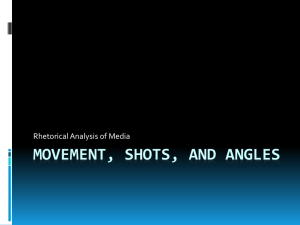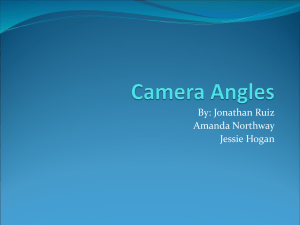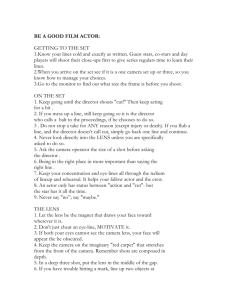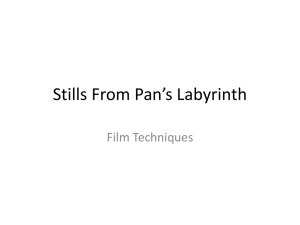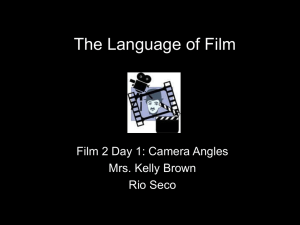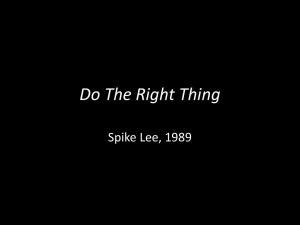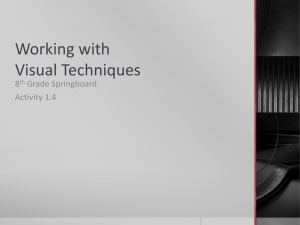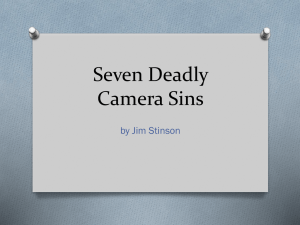visual elements pres
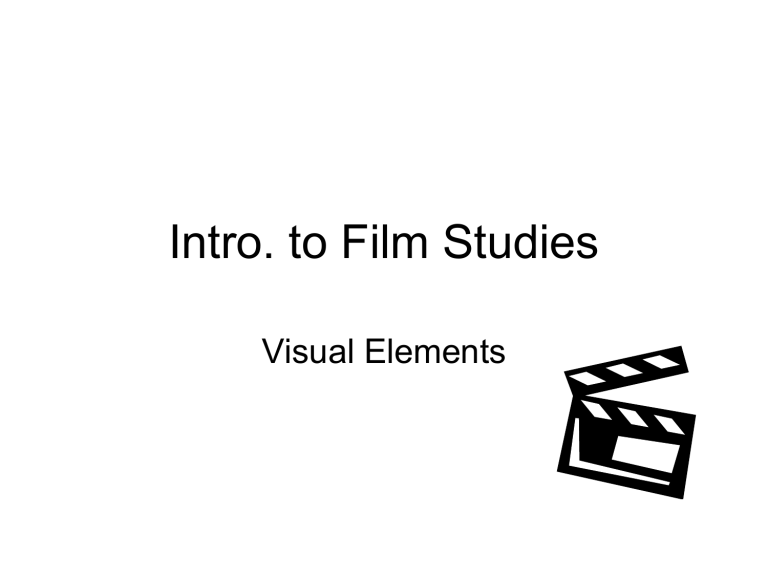
Intro. to Film Studies
Visual Elements
Shot
• The basic storytelling tool for the filmmaker
• A single view from the camera
From one cut until the next – may be a fraction of a second may be five (or more) minutes long
Pan
• The camera pivots horizontally left to right >>>>>>>>> comfortable camera motion
<<<<<<<<< right to left uncomfortable camera motion
Tilt
• The camera pivots vertically movement downwards – comfortable camera motion movement upwards – uncomfortable camera motion
• A lens can affect the way the viewer perceives the item on screen.
A lens can “soften” the focus of the shot…
Lens
or it can make it defined and cold.
Long shot
(LS)
• A shot that shows the object in its general surroundings
• Equal focus given to object and surroundings
(more to surroundings?) this is actually an ELS
Medium shot
(MS)
• A shot that shows only the object
• Focus on the whole object (and maybe immediate surroundings)
American shot
(AS)
• A special MS from the waist up
• Usually indicates hero
(good guy)
• Comes from depiction of hero in Westerns
• Only part of the object is shown
Close up
(CU)
• Focuses our attention
(usually face – shows emotion)
Zoom
• A lens effect that makes it look like the camera is moving towards or away from an object
Point-of-view angle
(POV)
• A shot looking through the character’s eyes
• Draws the viewer into the action
Reaction shot
• A shot of the person who is not talking or would not normally be the focus in a given situation
Bird’s-eye view
• A shot looking directly (or almost directly) downward
Used to show relationships between objects
High angle
(HA)
• The camera looks down at the subject
• Makes the subject powerless
Flat angle
• The camera looks straight on at the subject
• Neutral portrayal of object
(sorry, no picture – it’s obvious!)
Low angle
(LA)
• The camera looks up at the subject
• Makes the subject powerful (viewer powerless)
Oblique angle
• The camera pivots longitudinally to tilt the image on screen
• Creates diagonal lines (tension)
Sometimes this tension is ironic
Framing
• The camera angle forces the image to be surrounded by lines or other objects on screen
• May be used to emphasize an object or show that it is threatened
Soft focus
• The focal distance of the lens is set so that objects at only one distance are in focus
• Frequently used
• Focuses our attention on part of the shot
Rack focus
• A soft focus where the focal length switches during the shot
Deep focus
• All distances are in focus
• Requires a special
(expensive) lens
• Emphasizes back and foreground as well as object
This shot is not completely deep focus, but it’s close
Packed screen
• A lot of visual information on screen can be used to symbolize tension, action, chaos, etc.
2-shot
• Two people on camera
• Establishing shot for a conversation (usually a medium shot)
• Usually splits sides of the screen
• One person on camera
• Focuses viewer’s attention
1-shot
• Usually in series after a 2-shot
(note camera position)
180 º Rule
• The camera never crosses an imaginary line between two characters
• Keeps the characters on the same side of the screen to prevent confusion
Putting that all together
2-shot
1-shot (close-up) on one character
1-shot (close-up) on other character

